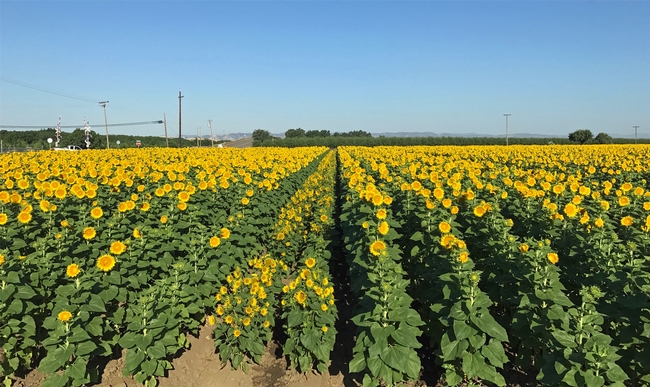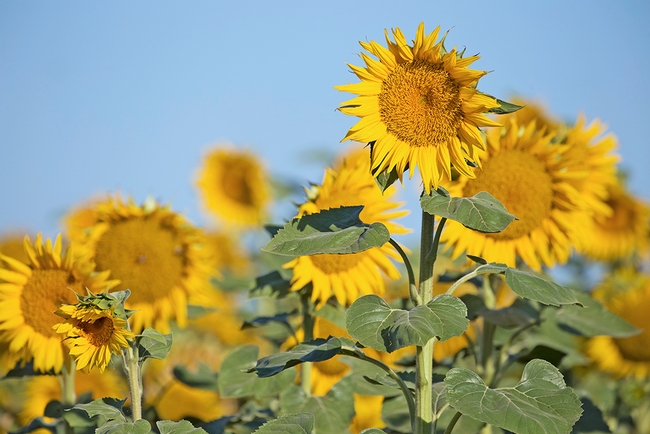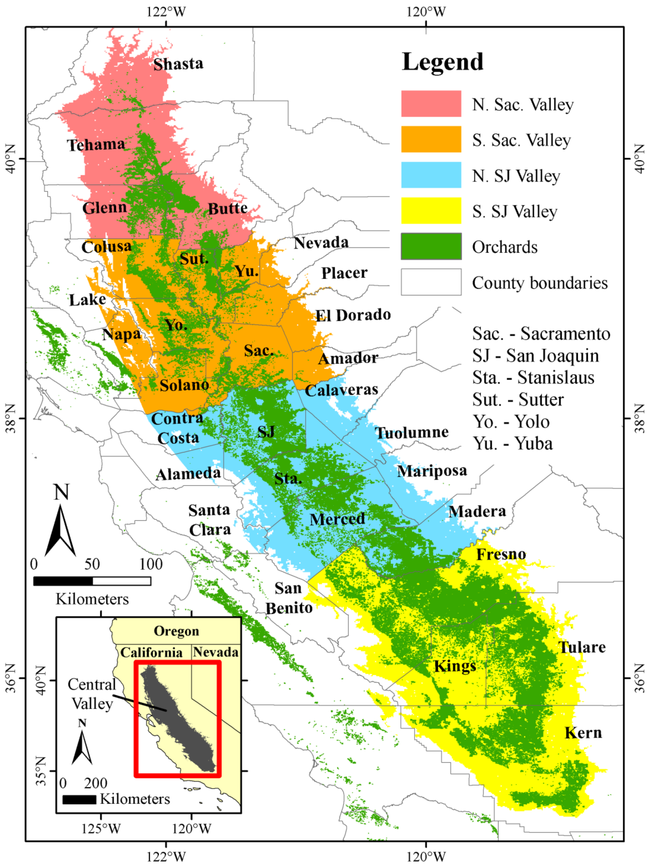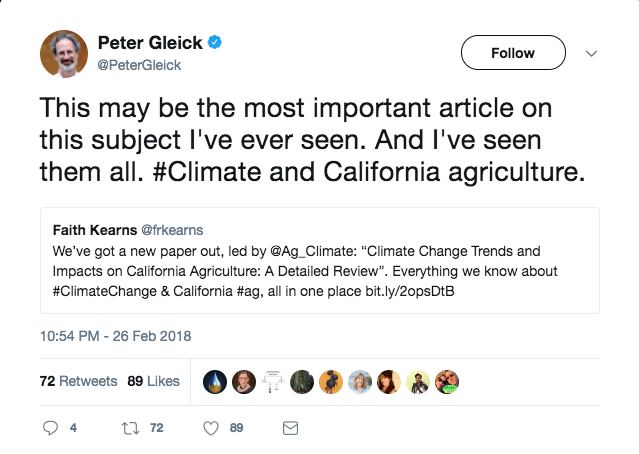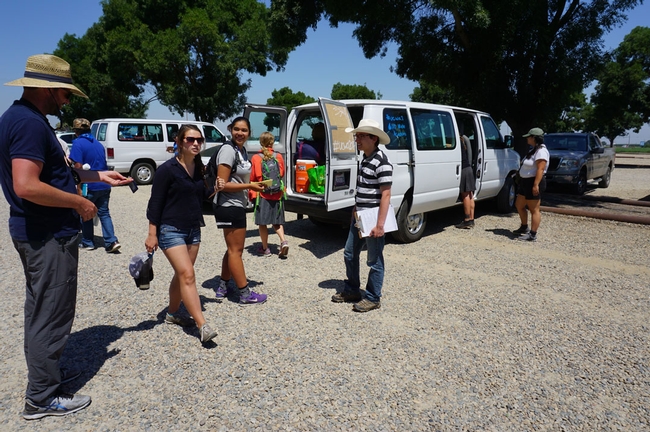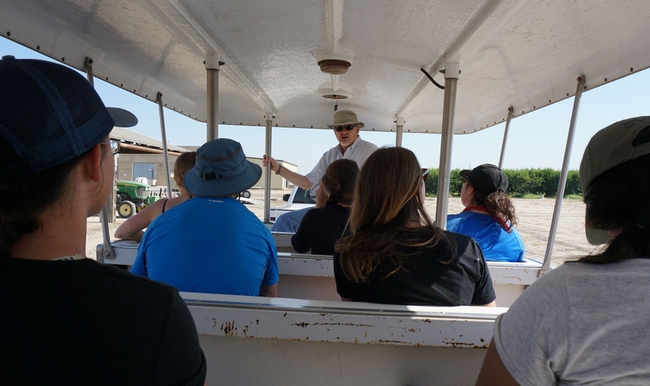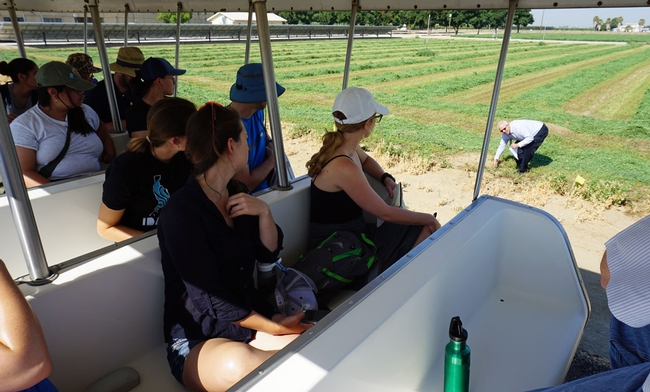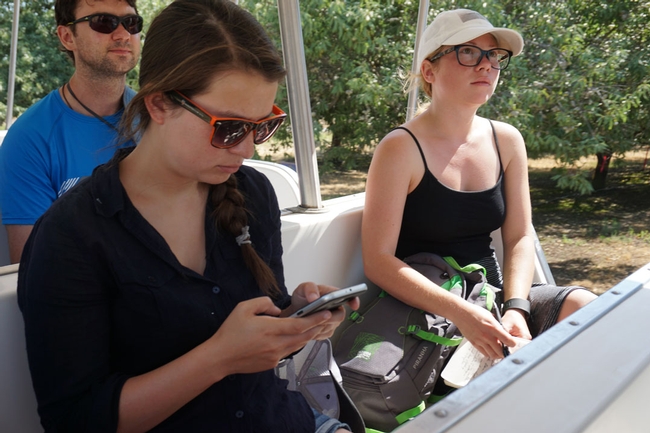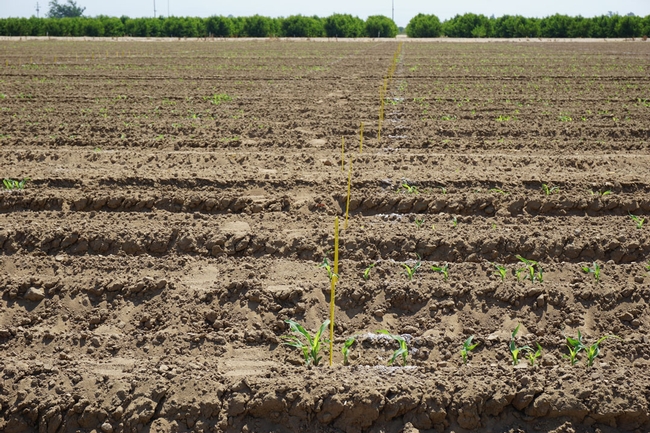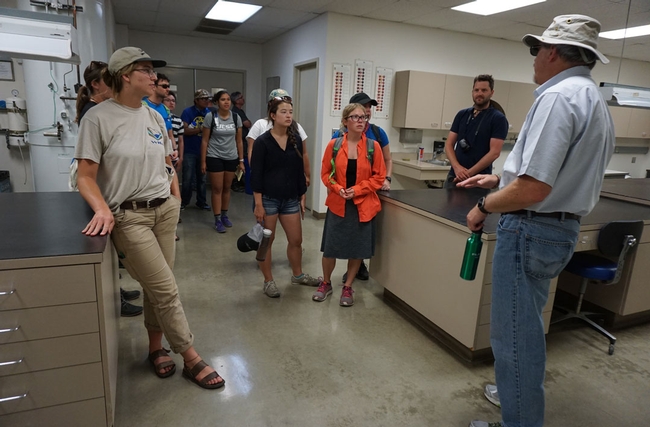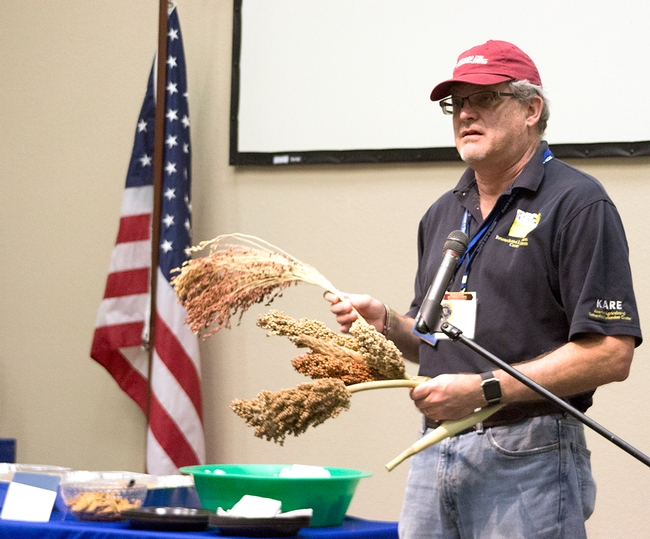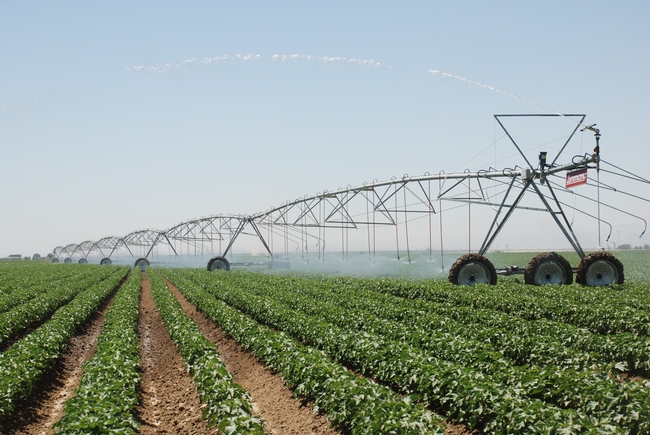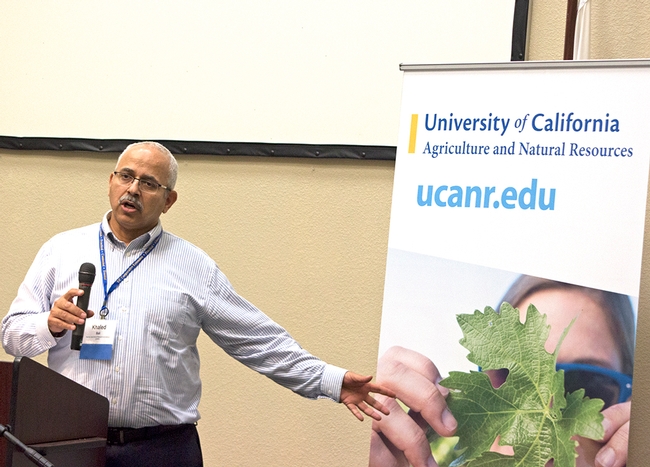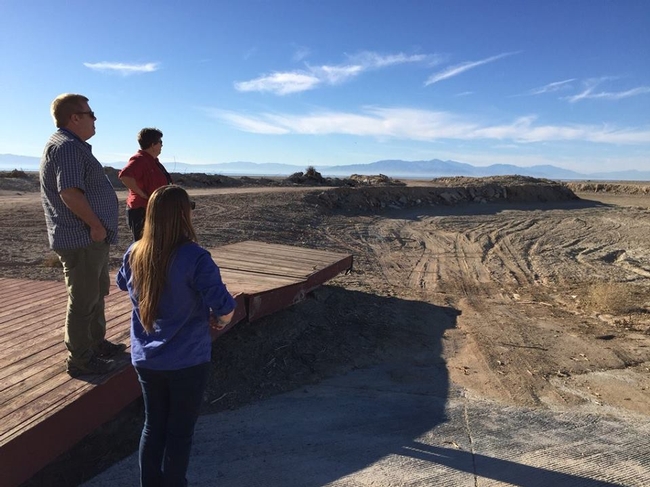Posts Tagged: Khaled Bali
Radiant daisy-like sunflowers produce a valuable crop with little water
Sweeping acres of striking golden flowers may soon grace California's desert southwest. UC Cooperative Extension irrigation specialist Khaled Bali believes sunflowers may be an ideal crop for the state's most punishing agricultural region.
California produces more than 90 percent of the country's hybrid sunflower planting seed, which is shipped around the nation and world. The seed is used to grow sunflower seeds for a healthy snack or salad topper, and for seeds that are expressed into sunflower oil, valued for its clean taste and polyunsaturated fat.
Most California seed is produced on about 50,000 acres in the Sacramento Valley. But the plant's low water use and early maturity hold promise for production in Southern California's low desert.
Bali's research began two years ago with 1,800 plots of sunflowers, nearly 300 different genotypes, at the UC Desert Research and Extension Center in Holtville. All plants were well-watered for four weeks before drought treatment started. In 2016, the trial plots were irrigated at 60 percent of the area's ETo (the full amount of water used by well-irrigated, mowed grass in that environment), and at 100 percent.
“Sunflower is a California native species grown as a hybrid seed crop,” Bali said. “With limited water, we wanted to look at varieties that tolerate drought and stress.”
That year, Bali found significant variation in yield across the varieties, but no difference between plots that received 60 percent of ETo and 100 percent
“I've been doing deficit irrigation for a long time,” Bali said. “I never expected that.”
For the 2017 season, the 60 percent ETo plots were dropped to 10 percent to better understand the implications of severe drought on the sunflower cultivars.
“The emphasis in 2017 was to intensify our drought treatment, giving less water earlier and to quantify the genotypes' drought avoidance strategy by digging up roots and using computer image analysis to determine root traits,” Bali said.
Bali attributes the sunflower crop's low water needs to its deep tap root and crop production timing. Sunflower in the low desert may be planted from January to February, and harvested in May and June.
“Sunflower water needs are relatively low since they are harvested before the hottest part of the summer,” Bali said.
His research is continuing in 2018.
A new UC publication, Sunflower Hybrid Seed Production in California, is now under review and is expected to be available to producers in fall 2018. Written by UC Cooperative Extension advisor Rachael Long and colleagues, including Bali, the publication outlines crop production standards, land preparation, fertilization, pest management, harvesting and more.
Long said sunflowers are favored for crop rotations because they help in long-term management of weeds and diseases, the plants add biomass to the soil after harvest, and they are a profitable specialty field crop.
Read more about California sunflowers in a Green Blog post by Rachael Long, Sunflower seeds are boosting California's ag economy.
California agriculture industry must act now to adapt to climate change
"This article received more than 1000 views in less than a day," Pathak wrote in an email to colleagues.
The review article summarizes historical and future climate trends and their impacts on California agriculture. The authors also suggest adaptation and mitigation strategies.
Shortly after Kearns, California Institute for Water Resources academic coordinator, tweeted, “We've got a new paper out, led by @Ag_Climate: “Climate Change Trends and Impacts on California Agriculture: A Detailed Review”. Everything we know about #ClimateChange & California #ag, all in one place http://bit.ly/2opsDtB,” journalists took notice.
“Climate change could decrease the yield of some crops in the state by up to 40 percent by 2050. That's a big deal for farmers growing more than 400 commodities,” Ezra Romero of Capital Public Radio reported. “Tapan Pathak, a UC Cooperative Extension specialist based in Merced, and his research team analyzed more than 90 studies on climate change and discovered that warming temperatures may alter where crops grow across California. Their findings were published in Agronomy Journal.
“In order to make California agriculture more sustainable we have to act now,” Pathak said.
Ian James of the Desert Sun spoke with Kearns. “One under-appreciated aspect of California's climate is how important our temperature envelope is to California's agricultural sector. The right temperatures at the right times are absolutely crucial,” said Faith Kearns, a scientist with the California Institute for Water Resources who was part of the team. “For example, warm weather in January and February can reduce almond yields, but warm summers can reduce peach yields. So, there really is no-one-size-fits-all adaptation approach.”
In her report for KQED, Amel Ahmad noted, “Climate scientist and author Peter Gleick called it the most important report he's seen on the impact of climate change on California agriculture.”
The study was also covered in Courthouse News Service by Nick Cahill, Think Progress by Natasha Geiling, Digital Journal by Karen Graham, Grist by Nathanael Johnson, NPR by Ezra Romero, Modern Farmer by Dan Nosowitz and Fresno Bee by Brianna Calix.
This study was supported by the UC President's Carbon Neutrality Initiative and UC ANR.
Future water leaders soak up irrigation information
University of California students are taking a long journey through California to trace the state's complicated and critical water supply. The recent graduates and upper-division co-eds from UC Merced, UC Santa Cruz, UC Berkeley and UC Davis are part of the UC Water Academy, a course that combines online training with a two-week field trip for first-hand knowledge about California water.
The tour began June 18 at Lake Shasta, the state's largest reservoir, and followed the water's course to the Sacramento Valley, through the Sacramento-San Joaquin Delta and south along the Delta-Mendota Canal. Since a key water destination is agriculture, the UC Water Academy toured the UC Kearney Agricultural Research and Extension June 23, where research is underway to determine how the state's water supply can be most efficiently transformed into a food supply for Americans.
“You're visiting a place ideal for growing high-quality fruits and vegetables, because of the Mediterranean climate and low insect and disease pressure,” said Jeff Dahlberg, director of the UC KREC.
UC Cooperative Extension water management specialist Khaled Bali joined the students next to his alfalfa research plot, where different irrigation regimens are compared to determine the maximum yield that can be harvested with the minimum amount of water.
“It used to be that the No. 1 objective was to maximize yield,” Bali said. “But with the limited supplies and the cost of water, now the No. 1 objective is to get the maximum economic return. Growers might be better off selling some of their water to other jurisdictions.”
A water tour wouldn't be complete without an introduction to drought research. A recently planted sorghum trial provided the backdrop.
“California is a great place to study drought tolerance,” Dahlberg said, “because you can induce a drought by withholding irrigation.”
The sizable field contains 1,800 plots with 600 sorghum cultivars under three irrigation schemes: one irrigated as usual, one in which water is cut off before the plants flower, and the final one where water is cut off after the plants flower.
“Every week, a drone flies over to collect data on the leaf area, plant height and biomass,” Dalberg said. “Hopefully we will get associations with gene expression and this phenotype data."
Dahlberg and his collaborating researchers believe identifying the genes responsible for drought tolerance in sorghum will help scientists find drought-tolerant genes in other cereal crops – such as wheat, corn, rice and millet. “This will go a long way to feeding the people of the world,” he said.
There is still much to learn about sorghum drought tolerance – is it conferred by the plant's waxy leaves, the way stomata are controlled, accumulation of sugar in the leaves, or a mechanism in the roots?
“These are all questions you will have to answer to feed the world,” Dahlberg said. “That's why I would encourage you to continue studying water. There's a lot for you to get into.”
A third-year earth science student at UC Santa Cruz and a member of the academy, Denise Payan, said the sense of responsibility for the future is not daunting, but encouraging.
“It makes me feel like I can make a difference,” she said. The tour through California is shaping her plans for the future, which may include a career at the intersection of geology and biology.
“This has opened my eyes to a lot of issues,” she said.
The next stop for the UC Water Academy is the vast Tulare Lake basin to learn about groundwater recharge before heading east to the Owens Valley and the shores of Mono Lake. From there the academy turns to the Sierra Nevada to visit San Francisco's water supply, which is collected by Hetch Hetchy Dam. The field trip ends with a two-day rafting trip on the American River.
The UC Water Academy is offered through UC Water and led by UC Merced professor Joshua Viers and UC Cooperative Extension water management specialist Ted Grantham. In addition to the two-week tour, students participated in weekly online meetings and complete a project on communicating California water issues to public stakeholders. Students receive 1 unit of academic credit.
The drought may be over, but water concerns haven't been doused
Record winter rainfall during the 2016-17 winter has enabled farms to emerge from survival mode in the short term, but scientists are still working hard to be ready for the next drought, reported Tim Hearden in Capital Press.
Hearden spent a day at the UC Kearney Agricultural Research and Extension Center in Parlier to learn how researchers at the facility and the UC West Side Research and Extension Center near Five Points are combining technology with management practices to put every drop of irrigation water to work.
“This is one of the few places in the world where you can do drought research on a field level,” said Jeff Dahlberg, director of the 330-acre Kearney facility. “What I'm planning is a world-class drought nursery.”
At the West Side REC, researchers are working with farmers to perfect micro-irrigation efficiency and test drought stress on the area's most prevalent crops.
“We'll grow a tremendous number of cultivars of a crop” and identify “what seem to be the most promising cultivars when you grow them under drought conditions,” said Bob Hutmacher, a cotton specialist and the center's director.
Hearden spoke to Jeff Mitchell, UCCE cropping systems specialist and director of the Conservation Agriculture Systems Innovation center (CASI). CASI is encouraging farmers to adopt farming practices that save water, reduce dust and help improve the condition of soil, such as subsurface drip irrigation, overhead irrigation, minimum tillage, cover crops and crop residues.
“This is not done right now in California,” Mitchell said. “In the future, there may be a strong likelihood of certain agricultural sectors adopting these practices.”
Other subsurface irrigation trials are showing dramatic increases in yields. Khaled Bali, an irrigation water management specialist at Kearney, said underground drip systems in alfalfa fields have achieved 20 to 30 percent more yields while in some cases using 20 percent less water.
Kevin Day, a UCCE pomology advisor in Tulare County, is trying subsurface drip in a peach and nectarine orchard after working with the USDA to use it for pomegranates. He's seen as much as a 90 percent reduction in weeds because there's no surface water to feed them.
“Fewer weeds, fewer pesticides,” he said. “We use high-frequency irrigation. We irrigate as the crop needs it. When you do that, you keep the roots deeper, which makes for better aeration.”
UC ANR vice president Glenda Humiston visits the Imperial Valley
Humiston visited local farms, the Salton Sea, and UC Desert Research and Extension Center and UC Cooperative Extension in Imperial County. She had discussions with local farmers and industry representatives about renewable energy, drought and water issues, and agricultural production.
"It's great ot have our new vice president here to learn about the programs that we have here and discuss how we can improve them and bring more resources to the area," said Khaled Bali, director of UCCE in Imperial County. "That is basically my objective, bringing more resources to the area and have more collaborative projects."
Andy Horne, a Imperial County executive, said that solar farms have expanded in the county. Projects in place and those approved will cover about 4 percent of Imperial County farmland, a level the county intends to maintain. Humiston told the reporter that she is an advocate for farmland protection because the planet as a whole has a limited surface for cultivating crops.
"As we are dealing with things such as climate change and invasive species and drought, not only protecting those acres so that they are available but keeping them healthy and making sure water is available becomes ever more important," Humiston said.
Delgado reported that Humiston's trip to the Imperial Valley is part of an effort to visit all the UC Cooperative Extension offices and the nine research and extension centers around the state to familiarize herself with UC ANR efforts throughout California.
“The issues going on here are completely different than the Central Coast, Northern Sierras or Sacramento Valley,” Humiston said. “What is important is that we, the University of California, we have these offices in each and every county and that we have these research centers because if we are going to develop knowledge and find solutions and be able to implement those, we got to be able to have people in the ground here that can really dig into the real problem. You got to have people on the ground.”


